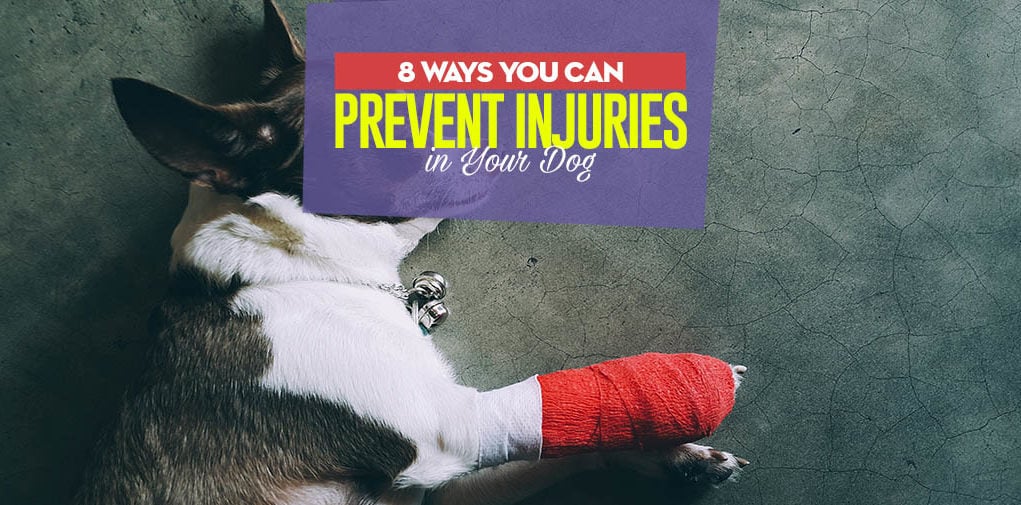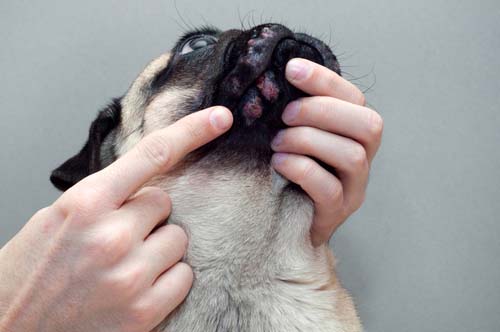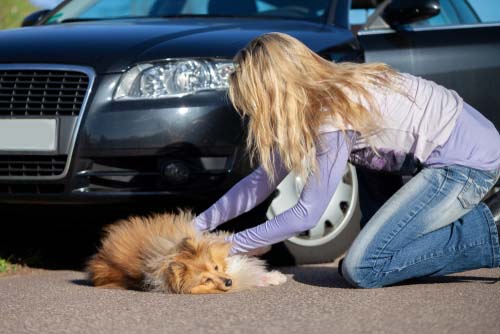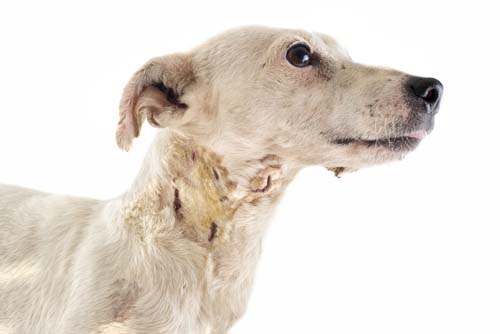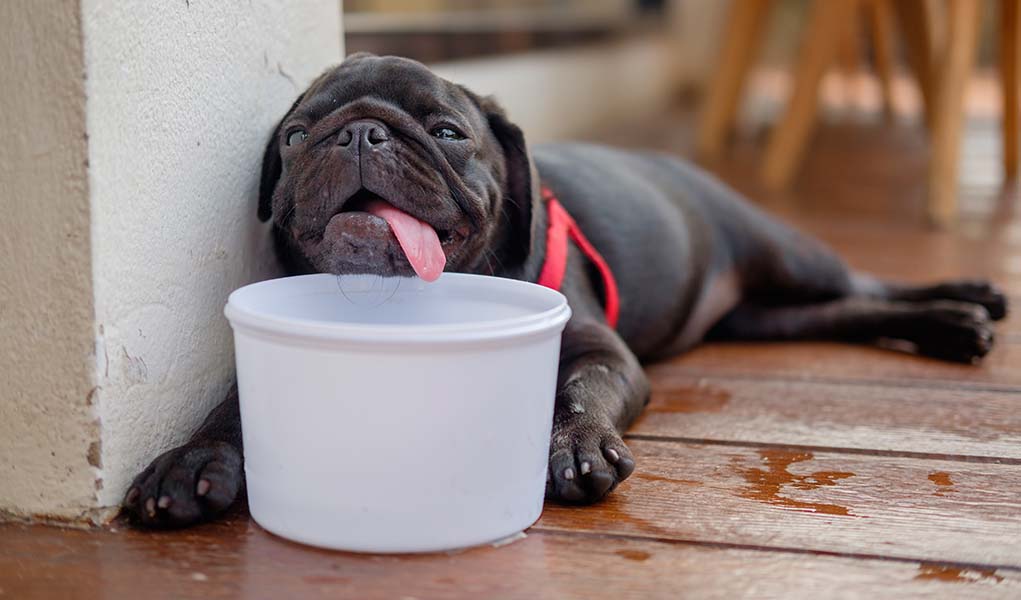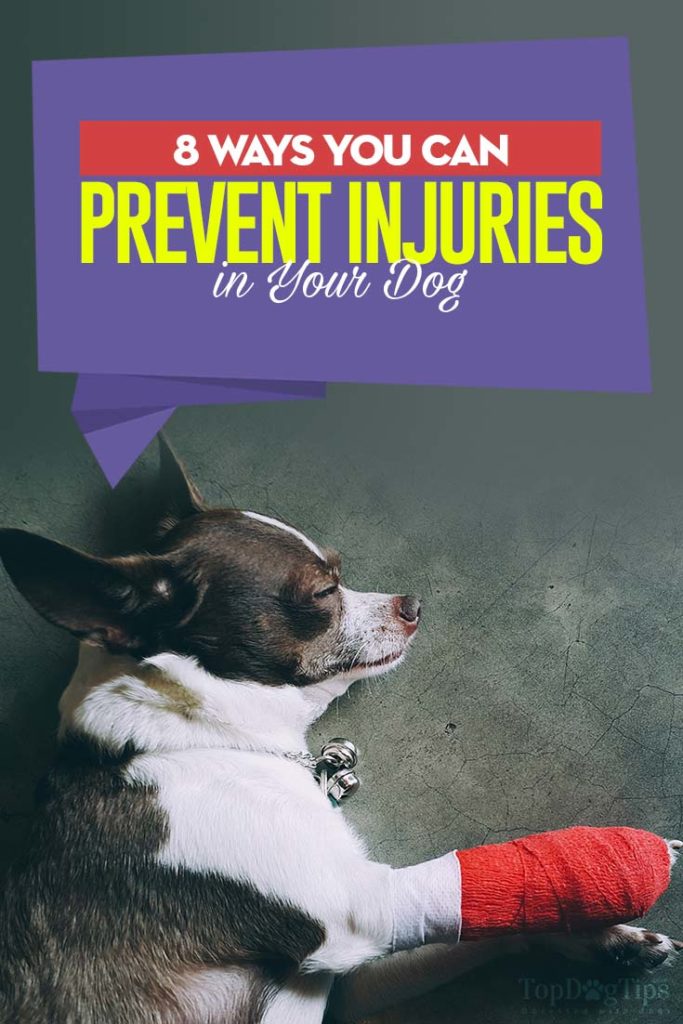Dogs are naturally curious animals and always full of energy. They enjoy running, playing and exploring, which can sometimes result in mischief, so it's not a surprise that they may injure themselves now and again. As an owner, there are a few things you can do to prevent injuries in dogs.
Table of Contents
Every dog is different, and you'll encounter instances where there's nothing you could've done to avoid the injury, but in other situations, you might be able to save your pet if you take the right steps. Below are a few tips on how to prevent injuries in dogs, and a list of most common canine injuries to watch out for.
1. Sprains and Tears
Sprains and tears are the most common injuries in dogs as they related to movement. They often occur during play time when your dog is running around in the park chasing that stick you threw. However, they can also occur at the most unexpected times, such as your pup jumping off the couch.
These injuries have a common name: soft-tissue injuries, and they are usually easy to spot. Your dog will be limping; they will use the healthy leg more than the injured one and he will loose interest in playing due to pain.
The best way to prevent sprain and tear injuries in dogs is to keep your dog active as much as you can, year-round. Sedentary dogs are more likely to suffer from sprains and tears because their joints and muscles are stagnant and less mobile.
These injuries most often occur in the spring, after a long winter during which dogs have been inactive and lost muscle strength and endurance. If your pooch has been inactive for a period of time, ease him into the exercise and maintain at least the minimum level of activity through his day. You can also do some warm-up exercises.
2. Mouth Injuries
Most dogs will put anything in their mouths. It's normal for dogs, and that exploratory desire they feel will often result in different mouth injuries. The most common mouth traumas come from bones and sticks. To prevent such injuries in dogs, never give your dog cooked bones – they can splinter, cause tears in the mouth and even choking.
As far as sticks for “fetch” go, but you should opt for a safer option. Bring one of your dog’s favorite toys with you to the park, such as tennis ball or flying disc, and play fetch with it instead of a wooden stick. There are plenty of other great dog toys designed for a game of fetch like Chuck-It balls, discs and toy launchers.
Another thing you can do is supervise the dog more often and keep an eye on things that your pet puts in his mouth. None of us can watch our dogs at all times and you can’t always prevent mouth injuries in dogs, but in many cases, your reaction will be enough for the dog to drop the thing from his mouth and remember not to do that again.
3. Car Accidents
Unfortunately, car accidents with dogs involved are also pretty common, no matter how cautious you think you are. However, that doesn’t mean that you shouldn’t do everything in your power to prevent injuries in dogs of this type. There are a few precautionary measures you can take to make your canine safe(r).
The biggest danger is allowing the dog to roam free. So if there's a chance of your dog getting out by himself, start by preventing this from happening. For example, ensure that your family knows not to leave the door open. If you have a backyard, ensure it has enough for the dog to do, place to rest and otherwise keep your pet in there. You can also use invisible fences or for jumping dogs, this type of fence.
You need to teach your dog Recall command, and be sure that he knows it before you let your pooch off the leash. When you do let him off the leash, you should only do it in quieter areas away from any roads and traffic. You might think that your dog would never run off to chase a squirrel or a cat, but animals are unpredictable. Those are natural instincts and they can often kick in unexpectedly.
4. Eating Injuries
Similar to a dog mouth injury, your dog will pick up something and put it in his mouth. With eating injuries, it usually means your pooch has eaten and swallowed it this time.
You should never let your dog eat bones unintended. Make sure that all his toys are not too small for him, or he can swallow them and choke on them. This is especially true for chew toys like Nylabones, which must be picked out carefully.
Keep an eye on your dog at all times when you are going for a walk. Having your dog swallow something when on a walk might cause serious intestinal or digestive problems, especially when it's something sharp or toxic.
Make sure that all your plants in your home are not toxic, and don’t buy new plants if you are not sure whether they can be harmful to your dog. Keep medications and cleaning products closed up or high out of reach of your dog since they can be dangerous. Things like pesticides often found in homes are also toxic to dogs.
Be aware of human foods as well, especially if you are not sure whether they are bad for your dog. Chocolate, nuts, onions, grapes, alcohol, are just a few things on the no-no list yet you can often find them lying about your home.
5. Bite Wounds and Other Cuts
Whether your dog has a bite wound from playing with other dogs, or from fighting with them, they are all quite common, as well as other cuts and abrasions which happen when your dog is playing and not being careful enough.
It's impossible to completely prevent cuts and bites injuries in dogs, but if going to a dog park, follow some basic guidelines. You should inspect the area where your dog will be playing before you let him loose. Stay away from places that have rough surfaces, or a lot of sharp debris.
Get to know other dogs and their owners in the park, and let your dog get to know them as well. Fights often happen because dogs are not introduced properly and because one of them is not comfortable with the other. Don’t leave dogs who barely know each other unsupervised. As far as playful bite wounds go, there isn’t much you can do about it.
Your dog might end up with a bite wound from another animal. For example, bite wounds inflicted by snakes are also common in certain states, especially if you like to explore nature with the dog, and go to other places and not just your nearby park.
The best way to prevent snake bites is to know where snakes can be found in your area and avoid those places. Also, keep your pet on a short leash so he doesn’t run off and find a snake on his own. Snake bites will need to be treated at the vet immediately, and the procedure can be expensive.
As far as other animals and wildlife goes, such as raccoons for example (which can carry rabies), the best thing you can do is keep an eye for them when you walk the dog, and keep your dog inside the house at night.
6. Heat Stroke
During certain times of the year, you'll need to take more precautions to prevent injuries in dogs. In summer, hot weather may be a hazard, and heat stroke can be very dangerous to your dog, and in some cases, it can even be fatal.
Prevent this by following some basic guidelines:
- Don’t walk your dog during the hottest hours of the day, especially in summer or if you live in extremely warm climate. It's best to walk your pooch in the evening or early morning. If your dog needs to go to the bathroom, you can go out for a brisk walk during the day, but pay attention to time spent outside.
- Take breaks in the shade during walks in high temperatures and always bring water for your dog with you.
- Provide a small dog pool for your Fido where he can get refreshed and cool off during warm days and make sure that he always has fresh water.
- Never leave your dog unintended in a car.
7. Eye Injuries
Whether it is an infection, or your dog hurt his eye some other way, preventing eye injuries is not easy. There are many types of eye problems in dogs, and they will all need different prevention methods.
One common way for an dog eye injury to occur is when your pet sticks his head out of the car window, and debris or dust get in his eyes. Prevent this by not lowering car windows that low. In fact, most experts strongly advise against bad habit, no matter how much your pooch loves it.
Other than that, there isn’t much you can do to prevent injuries in dogs of this type, but you can react fast if you notice anything unusual, like your dog pawing at his eye, or if his eyes are red or tearing.
8. Ear Injuries
Ear wounds also commonly occur during playtime. You can separate dogs playing if you notice that things are getting a little bit rough, but other than that, you simply have to let your dog be and watch out for when the things get heated.
On the other hand, ear infections can be prevented with proper hygiene. You should make sure that your dog’s ears are clean and dry. At least once a month you should use a solution in order to get rid of excess debris and flush which gathers in their ear canal. If you notice any discharge or odor, you should call your vet to check it out.
READ NEXT: 8 Signs Your Dog Is Experiencing Joint Pain


